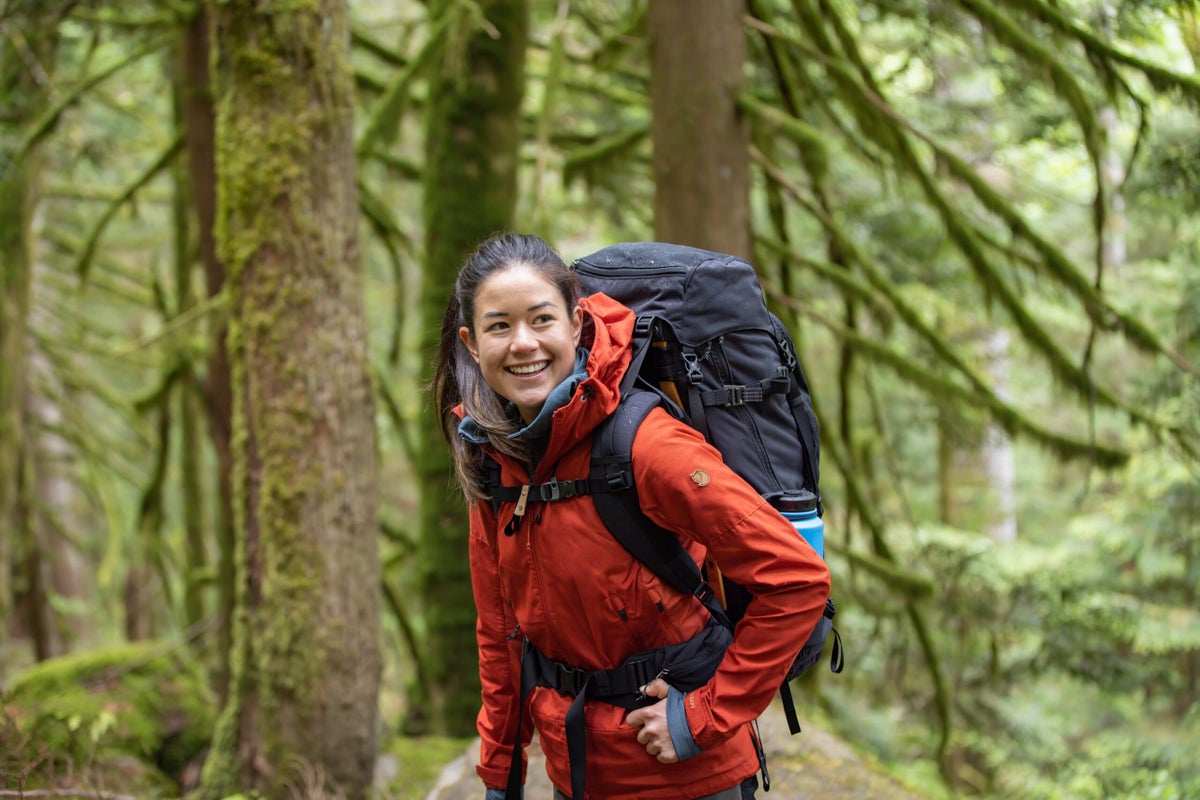No products in the cart.
Outdoor Adventure
How to Spend More Time on the Trail this Fall and Winter
For most, the hiking season ends when the last leaves drop. But if you’re used to hanging up your boots in the fall, you’re missing out on some serious magic. In winter, the crowds vanish, leaving trails quiet. Snow-dusted branches and sunlit frost cast the world in a new light. Pesky insects vanish in the cool, crisp air, and leafless branches reveal hidden views. The cherry on top? Many parks relax their reservation and camping permit systems starting in late fall, which means easier trail access than any other time of year.
This fall and winter, don’t lose your momentum. Instead, make the most of the cold months with these tips for maximizing your trail time.
Layering for Cold Weather
Your first line of defense against the cold is your clothing. Build a smart layering system and you’ll be able to fine-tune your personal thermostat no matter what the weather does. The trick is to stay just warm enough while minimizing sweat, which can leave you damp and chilled. Your cold-weather kit should include a synthetic or merino wool base layer, a lightly insulated midlayer like the Expedition X-Laat Jacket, a thick puffy coat like the Keb Touring Down Jacket, and a waterproof shell to deflect rain or snow like the Keb Eco-Shell Jacket.
As for bottoms? In moderately wet and chilly weather, mid-weight, water-resistant hiking pants like the Keb Trousers can be a great choice. If you expect much precipitation or deep snow, though, you may need a shell pant like the Keb Eco-Shell Trousers, which are fully waterproof and have long side zippers for venting heat. In temperatures below freezing, you’ll likely want to wear synthetic or merino wool base-layer bottoms beneath your hiking pants.
Fuel Up and Don’t Forget to Hydrate
The human body is a furnace: add fuel, get heat. Plus, between carrying heavier gear and the laborious work of hiking through snow, most hikers need way more calories in winter. So, when you’re out in cooler weather, aim to eat a snack at least every hour (and bring plenty of extras).
Pro tip: make sure all your food is freeze-proof. (Most granola and protein bars go rock-hard as soon as the mercury drops.) Fatty foods are both cold-resistant and provide dense sources of fuel that will keep your internal fires burning. Because cold weather can dampen appetites, bring at least one salty option and one sweet option, and make sure it’s real food you’re excited to eat. Some favorites are cheese, jerky, salami, milk chocolate, nuts, banana bread, and bacon.
Lastly, don’t forget about hydration. In cold weather, it can be hard to remember to drink water. But cold, dry air sucks moisture from your breath, which means you’re slowly dehydrating yourself even if you aren’t sweating. Plus, proper hydration keeps your blood thin, which allows it to more easily flow into the tiny blood vessels that keep your fingers and toes warm. To keep water drinkable, opt for bottles over hydration reservoirs with hoses, which can freeze. Remember that water freezes from the top down, so store bottles lid-down. That way, if you do get a layer of surface ice, it won’t cut off your access to the liquid water beneath.
Where to Go
Earlier this year, we rounded up some of the country’s most scenic and rewarding trails (check all of them out in our interactive Trekker’s Handbook). But when the air cools, a few of the trails on our list really start to stand out. Here are three hiking hot spots that are better in the fall and winter.
Grand Canyon National Park
Come October, the sweltering Arizona heat gives way to cool mornings and perfect afternoons, making it the ideal time to visit the Grand Canyon. The almost 24-mile Rim-to-Rim route will carry you through a stunning temperature gradient—it’s not uncommon to have feet of snow stacked on the canyon rim and balmy 50-degree temps at the canyon bottom. The best perk? Crowds tend to disperse starting in late September, so you might even get this bucket-list natural wonder to yourself.
Appalachian Trail
Plan a day hike in Shenandoah National Park or Great Smoky Mountains National Park in October to see some of the brightest crimson maples and yellow birch leaves out there. When peak color subsides and the leaves fall? Go back for some real highlights. You’ll be able to peer through new windows thanks to the absent foliage to glimpse rolling mountain vistas and rugged rock outcroppings that you never knew existed. When it’s really cold, you might even catch a hard frost, which crystallizes fallen leaves and tree branches into an otherworldly dreamscape.
Wonderland Trail
For those with winter-camping experience, consider an overnight along the Wonderland Trail. A 93-mile loop encircling Mount Rainier, this trail is known for its scenic beauty, plentiful camping, and notoriously difficult-to-land overnight permits. The good news for cold-weather warriors? While permits are required year-round, advance reservations are only recommended for the busy season of June through September. When school is back in session, the number of people vying for coveted permits drops sharply, which means you can easily nab an overnight slot and on the weekend of your choice. Start at Longmire and head east along Nisqually Creek to the forested Paradise River campground. Or, for more advanced terrain (and more open scenery) go north from Longmire to the Pyramid Creek site. You’ll need appropriate gear and strong winter camping know-how, but you’ll be rewarded with tranquil solitude and iconic views of Rainier blanketed in snow.
In 1960, Åke Nordin founded Fjällräven in his basement in the Swedish town of Örnsköldsvik. Since then the brand has stayed true to its mission of developing timeless, functional, and durable outdoor equipment, acting responsibly toward people, animals, and the environment, and inspiring more people to discover outdoor life.
Source link

